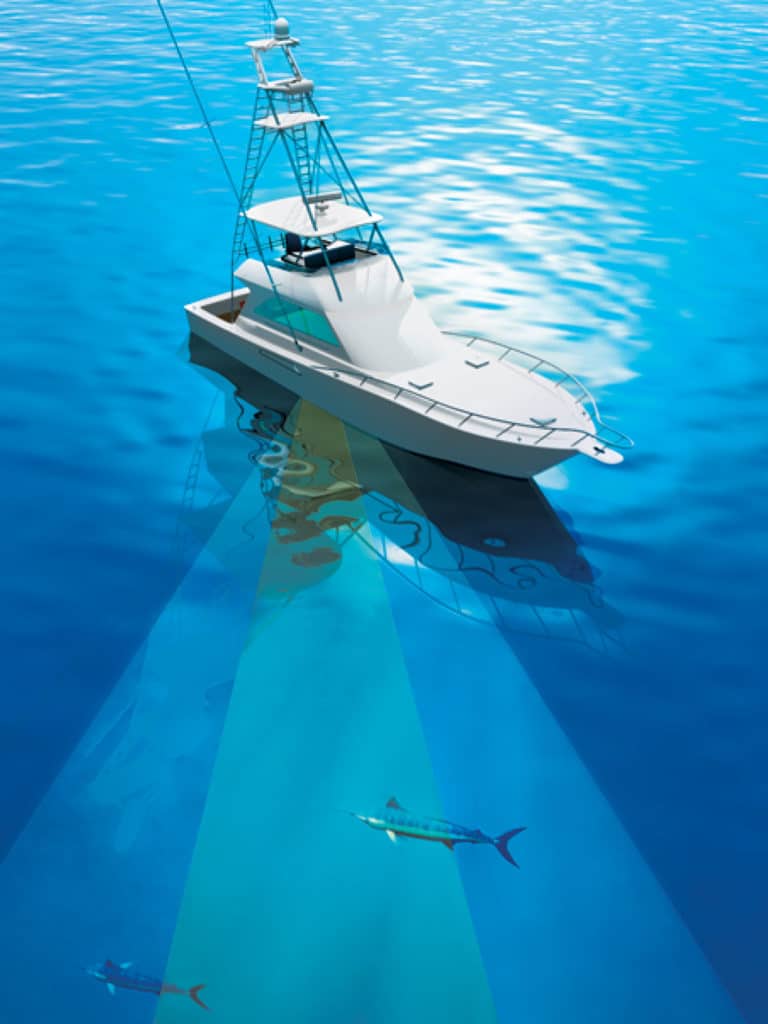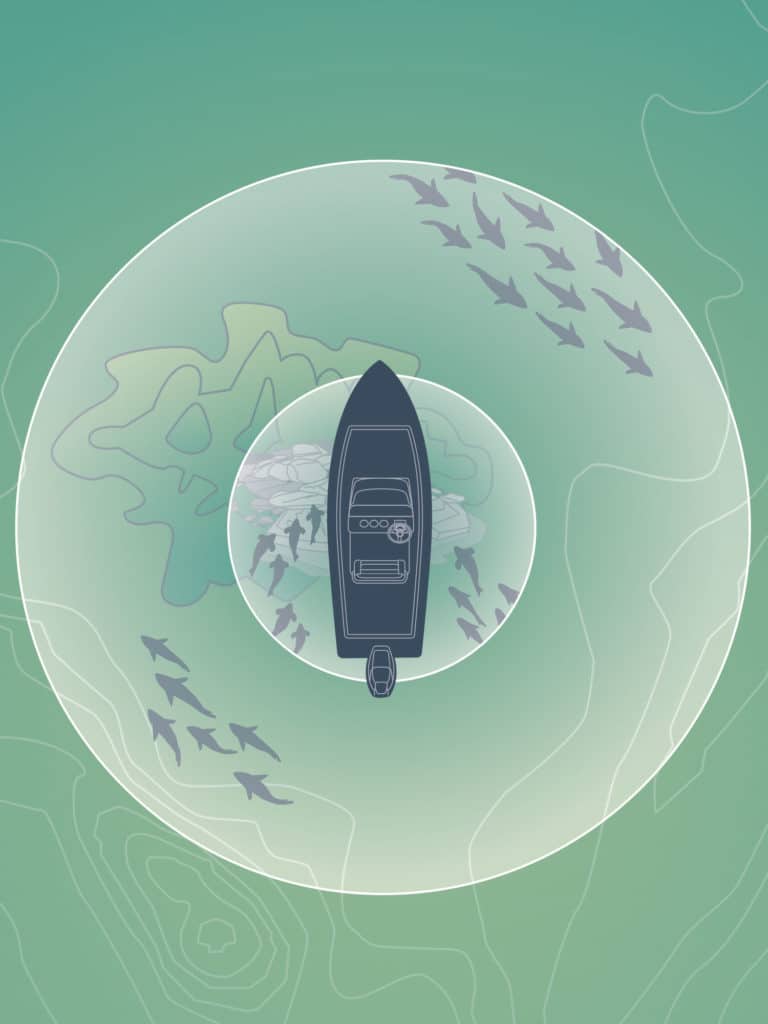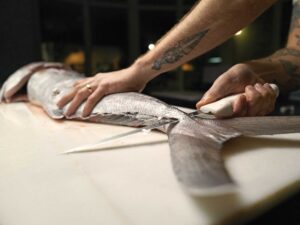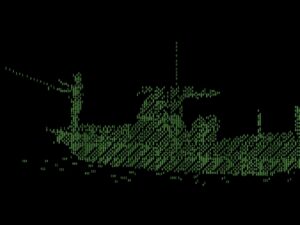
I mostly fish wrecks, but I also like to venture offshore to target tuna. Years ago, when switching from one venue to the other, I became stymied. My fish finder was doing a great job in pinpointing structure spots, but it barely marked any tuna, even when I saw them under the boat.
Determined to understand why, my investigations led to the transducer and, more specifically, its beam angle. The Airmar B60 for conventional sonar on my boat offers two frequencies — 50 and 200 kHz — that broadcast on a beam angles of 45 and 12 degrees, respectively.
The narrow, 200 kHz mode beam angle painted underwater structure and fish in crisp detail. Yet when using 200 kHz offshore, I saw virtually nothing. As I was to learn, that’s because it was like looking through a straw. Fast-moving species, such as tuna, prove difficult to detect on sonar in the first place, but a wider perspective helps. That’s where the 45-degree beam angle in 50 kHz proved effective. Its wide-angle view covers more water, and once I started using it offshore, I marked tuna.
On the other hand, I once forgot to switch back to 200 kHz while searching for a small wreck and soon became frustrated by the inability to identify any structure. My youngest son, Grant, eventually intervened, pointing out that I was using the wide-angle 50 kHz. After a quick switch in the sonar menu to the sharper angle in 200 kHz, the wreck appeared like a skyscraper on the ocean floor.
All of this points to the importance of matching the transducer beam angle to your style of fishing to maximize your effectiveness.
You can’t discuss beam angles without mentioning transducer frequencies. The two are interrelated in ways only a Ph.D. in physics understands. Adding to the complexity is the advent of CHIRP technology, allowing transducers to broadcast and receive sonar signals over a wide range of frequencies.
To simplify things and help you reach a decision when selecting a transducer, here are some basic applications, as outlined by leading transducer experts.

Narrow Thinking
As discussed earlier, a narrow beam angle works well for structure fishing. For CHIRP-ready fish finders, a good example is Airmar’s B175H that broadcasts and receives from 130 to 210 kHz with the beam angle ranging from 15 to 9 degrees, respectively, according to Peter Braffitt, general manager for Gemeco Marine Accessories, a distributor for Airmar Technology Corp., which supplies many of the transducers for brands such as Furuno, Garmin, Raymarine and Simrad.
“The relatively sharp angle focuses the sonar energy on a small area, resulting in well-defined edges that structure-oriented anglers like to see,” Braffitt says. While you might believe that the sharper focus also penetrates to greater depths, the higher-frequency band tends to dissipate more quickly in the water column than lower-frequency bands (other parameters, such as transmit power, being equal). Think in terms of the treble and bass in your stereo. The bass carries farther than the treble.
A Wider View
Anglers looking for tuna or bait have traditionally turned to transducers that broadcast a wide beam angle, such as 40 or 45 degrees at 50 kHz, as described earlier. However, a new series of CHIRP transducers with wide beam angles is now available.
The Tournament Series ultrawide-beam CHIRP transducers from Airmar offer 40-degree beam angles on a frequency range of 40 to 60 kHz. “I know some bluefin tuna fishermen who really love these wide-angle transducers for spotting fish,” says Steve Bradburn, assistant product manager for Furuno. These 2 kW transducers are also better for finding swordfish and bait schools at great depths.
Unfortunately, the wide angle also tends to smooth out the edges of bottom elements, making it difficult to recognize the distinct features of wrecks and ledges. That’s why Airmar integrated a second channel into these transducers. Airmar’s ultrawide R409LWM also broadcasts a narrow beam angle of 8 to 13 degrees at a medium frequency range of 80 to 130 kHz, giving anglers the versatility of two CHIRP transducers in one.
Happy Medium
A medium beam angle offers a compromise for both identifying structure spots and finding open-water fish. The high-frequency CHIRP transducers for Raymarine’s Dragonfly series of fish finders, for example, use a 25-degree beam angle in conjunction with a high-frequency band of 170 to 230 kHz.
“This works well for finding fish and bait schools in open water,” says Jim McGowan, marketing manager for Raymarine. “Yet it’s also tight enough to effectively find and fish structure.”
Airmar’s wide-beam transducers also offer a happy medium when it comes to beam angles on CHIRP-ready fish finders. The B175HW, for instance, broadcasts a fixed 25-degree beam angle at 1 kW on a high-frequency band ranging from 150 to 250 kHz. With this transducer, you cover a wide swath of the water column for finding fish offshore but can also read edges on wrecks and ledges.
Matching the transducer beam angle to the style of fishing gives you the view necessary to become more confident, find productive water and catch more fish.









